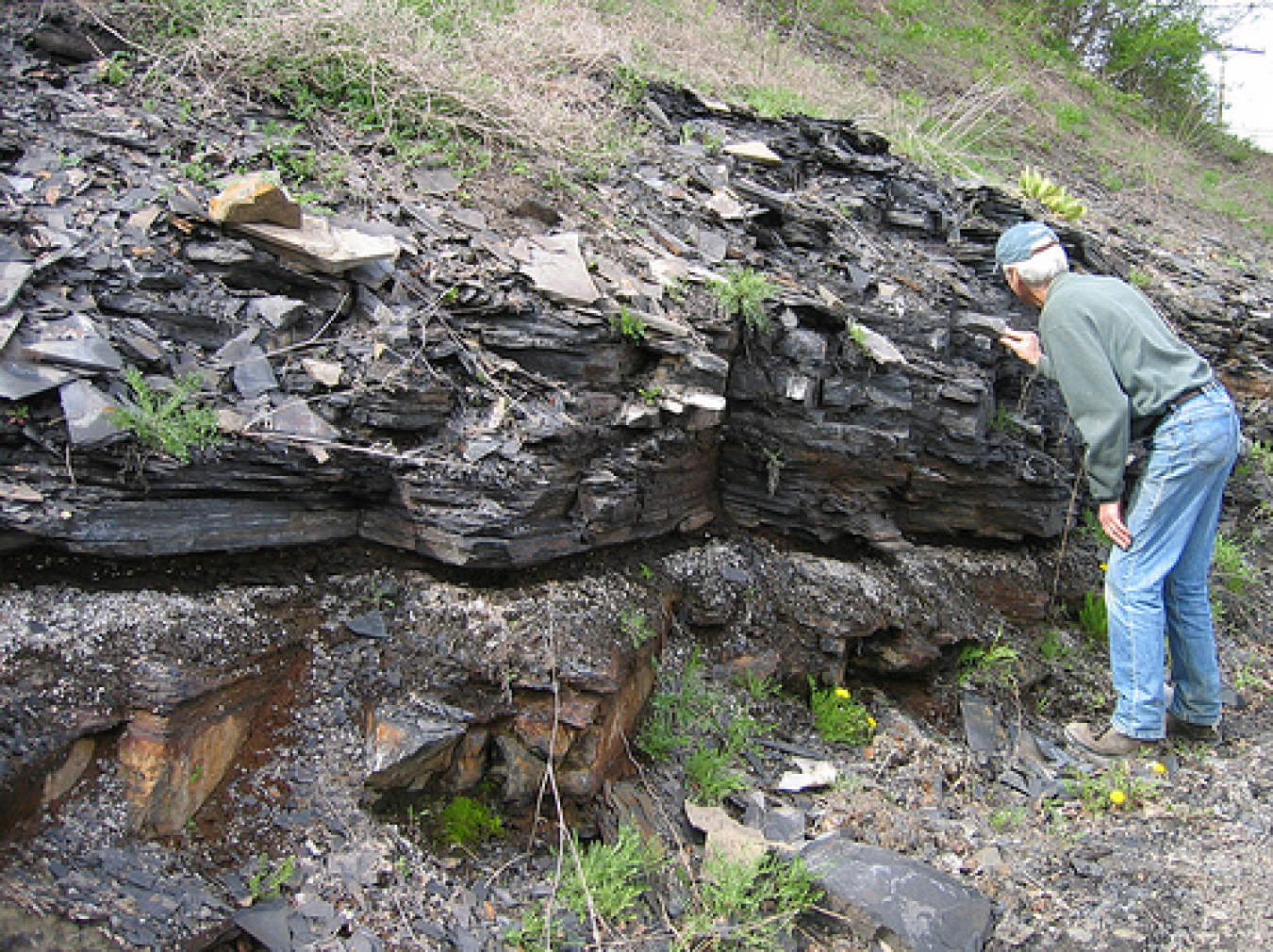
Geologist examining the base of the Marcellus Shale at an outcrop near Bedford, PA.
Gas-producing shales are predominantly composed of consolidated clay-sized particles with a high organic content. High subsurface pressures and temperatures convert the organic matter to oil and gas, which may migrate to conventional petroleum traps and also remains within the shale. However, the clay content severely limits gas and fluid flow within the shales. It is, therefore, necessary to understand the mineral and organic content, occurrence of natural fractures, thermal maturity, shale volumes, porosity and permeability to determine production potential. Appropriate drilling and stimulation technologies necessary for commercial rates and volumes will also depend on these reservoir characteristics.
